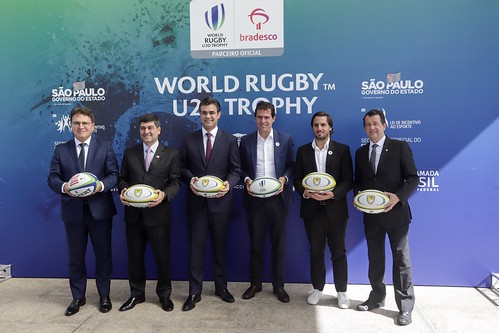World Rugby welcomes largest ever head impact study in community game
World Rugby #WorldRugby

Rugby Union – Rugby World Cup Tournament Opening Press Conference – Roland Garros, Paris, France – September 4, 2023 Chairperson of World Rugby, Bill Beaumont during the press conference REUTERS/Sarah Meyssonnier/File Photo Acquire Licensing Rights
SYDNEY, Nov 6 (Reuters) – World Rugby chief Bill Beaumont has welcomed the largest ever study of the impact of collisions on the heads of players as proof that the game is serious about becoming a global leader in athlete welfare.
The study used smart mouthguard technology, which will be obligatory in training and matches in elite rugby from next year, to measure 17,000 head acceleration events in 328 male players from under 12s to top grade community rugby.
The peer-reviewed report showed that 94% of the G-forces experienced by players were lower than those measured on people jumping on trampolines.
Most of the incidences where higher G-forces were experienced were the result of poor tackle or rucking technique, the study said.
“Using the latest research and technology is at the heart of our six point plan to make rugby the most progressive sport in the world on player welfare,” Beaumont said in a news release on Monday.
“These studies are concrete proof that World Rugby is putting our time, energy and efforts in to back up our words and the insights gained are already helping us make evidence-led moves to make the sport even safer.”
A rash of law suits from former players who say they suffered brain injuries from repeated concussions sustained while playing rugby present a major threat to the finances of the game.
There are also fears that the physicality of the sport might deter parents from allowing children to take up rugby union.
The Otago Community Head Impact Detection study (ORCHID) was a joint project between World Rugby, Prevent Biometrics, New Zealand Rugby (NZR), Otago Rugby and the University of Otago.
“This marks a positive beginning in developing a comprehensive understanding of head impacts in rugby, especially those leading to higher magnitude events,” said NZR’s Concussion Research Scientist Janelle Romanchuk, who co-led the study.
“With this data we can delve deeper into areas of the game where we can reduce or minimise risks, such as lowering the tackle height or prioritising good technique for both the ball carrier and tackler.”
An extension study on head impacts in elite men’s and women’s rugby conducted in partnership with Ulster University and England’s Premiership Rugby was also released on Monday.
It concluded that most contacts do not result in significant force to the head and that forwards were more likely to experience the higher head impact events than backs.
Reporting by Nick Mulvenney, editing by Robert Birsel
Our Standards: The Thomson Reuters Trust Principles.